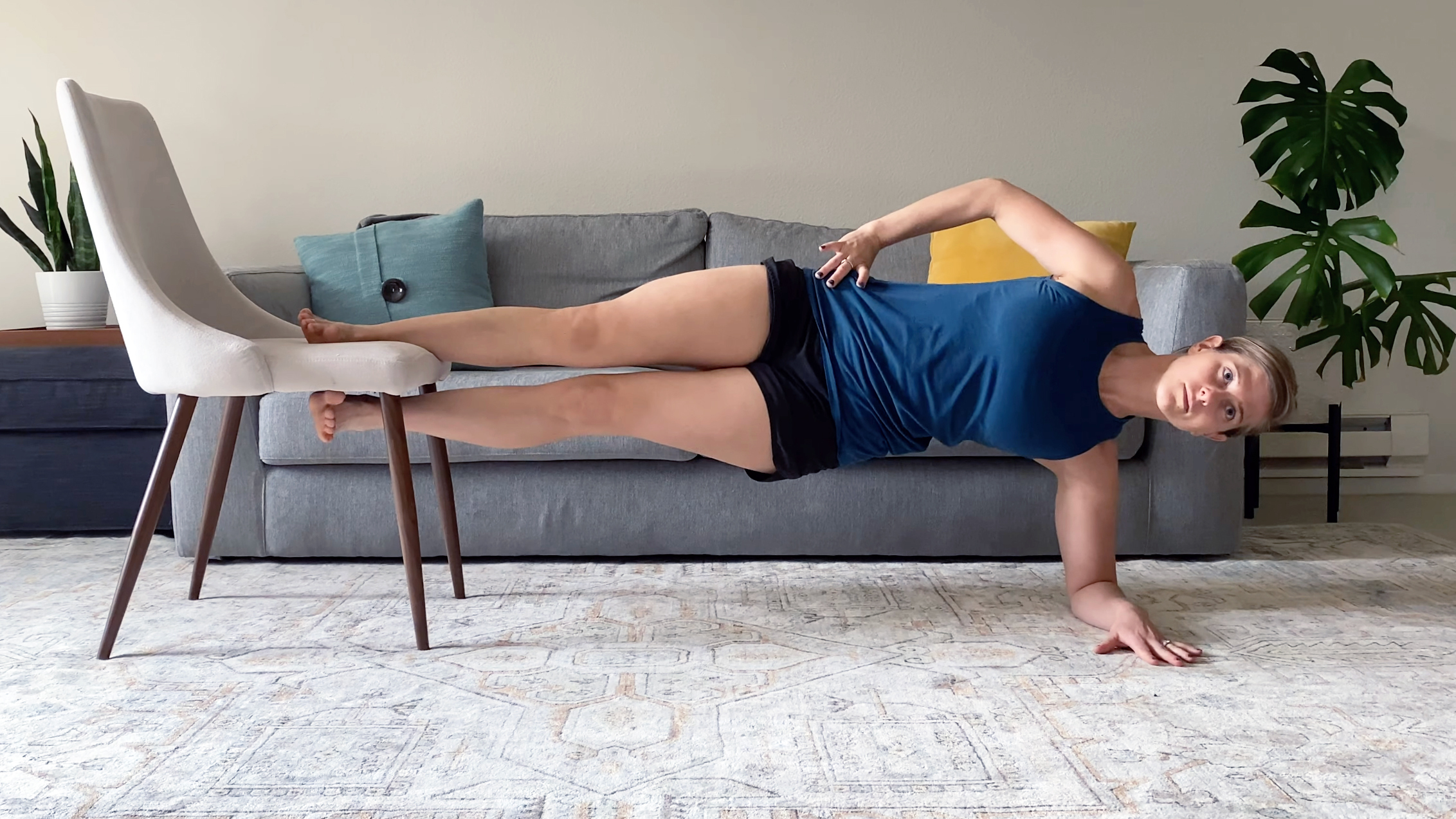
When it comes to planks, not all variations are created equal, and one that targets your inner thigh muscles and your core is known as the "Copenhagen plank". If you’re looking to get more bang for your buck with your next plank finisher, this is the exercise to add to your routine. Read on to find out how to do a Copenhagen plank, the benefits, and the common mistakes to look for when attempting the exercise for the first time.
As a reminder, if you’re new to an exercise, or you’re returning to training following an injury, it’s worth chatting to a personal trainer to ensure you’re moving with the correct form. Looking for more ab inspiration? Check out 14 of the best plank variations to build core strength and muscle.
What is the Copenhagen plank?
The Copenhagen plank is one of the most challenging plank variations out there, and for good reason — this one will make your entire body shake. It’s an underappreciated exercise that you probably haven’t come across, but unlike commando planks, you’ll be working your lower body just as hard here.
The exercise got its name from research conducted in Denmark, which found it helped to prevent groin pulls in athletes. Our hip adductors, or inner thigh muscles, are thin and can be prone to tears during exercise. The research found this exercise strengthened the adductors, and while nothing can completely prevent groin strains or pulls, Copenhagen planks seemed to help.
How to do a Copenhagen plank
Let’s start by taking a look at how to do a Copenhagen plank with perfect form. For this exercise, you’ll need a bench, box, chair or step — make sure the surface is stable, and strong enough to support your weight.
Like a side plank, you’ll lie on your side for this exercise, so you might want to use one of the best yoga mats.
- Lie on your left side, with your left elbow underneath your left shoulder. Your legs should be extended out and away from your body, and your right arm should be raised towards the ceiling.
- Place your right shin on the bench, and leave your left toes resting on the floor.
- Engage your core, thinking about sucking your belly button in towards your spine, and lift your hips and knees off the floor. Your body weight will be resting on your left foot.
- Lift the left foot off the ground, so it hovers a few inches below the right foot, still resting on the bench. Hold here for as long as you can, keeping your abs engaged, and your eye gaze forward.
The closer you are to the bench, the easier this exercise will be — if you’re a complete beginner start with your top knee bent on the bench, so your calf is fully rested on the bench. As you get stronger, move further down your leg, until just your foot is resting on it.
Once you’ve mastered the Copenhagen plank, you can make things more difficult by adding movement — bend your bottom leg and drive your knee up towards your body. Alternatively, hold a weight in your top hand, or increase the duration of the plank, or suspend your top foot in a TRX trainer, rather than a bench.
What are the benefits of a Copenhagen plank?
As mentioned above, this exercise is fantastic for strengthening your hip flexor muscles, which are often tight if you spend a lot of time sitting down behind a desk (here are 7 of the best exercises to do if you sit down all day), or do sports like running. These muscles are important for day-to-day tasks, like stepping to the side as someone moves towards you, as well as helping stabilize your pelvis as you move.
Of course, like all of the best plank variations, your core is also working super hard here to stabilize your body, particularly your oblique muscles, which run along the side of the body. Far from being just an aesthetic goal, a strong core is important for helping you walk with better posture, run faster, lift heavier weights, and prevent injuries in your lower back. If you are looking to build visible abs, you’ll need to focus on your body fat percentage — here’s how to calculate your body fat percentage, and why it matters.
Similar to side planks, the Copenhagen plank works one side of the body at a time — referred to as a unilateral exercise. This can be helpful when it comes to correcting any muscle imbalances in the body, as whether you’re a cyclist or a runner, you’ll often have one stronger side of the body. Muscle imbalances can lead to injuries, so if you notice Copenhagen planks are a lot harder on one side, you know to focus on building strength on that side of the body.
You’re also working on your shoulder stability in this exercise. To make things even harder, place your hand flat on the ground, rather than your elbow.
What are the common form mistakes to look out for?
Shoulders rotating forward
One of the biggest challenges in this move is keeping your trunk steady. Be careful not to let your shoulder rotate forward. Think about keeping your core, glutes, and back engaged as you hold the plank, as if you’re leaning against a wall.
Letting your hips drop
Another mistake is letting your hips drop back down to the floor in the plank. Again, think about keeping your core engaged, and a straight line alone the body from your head to your feet. If you do notice your hips dropping, stop and re-set, as you don’t want to put pressure on your lower back.







